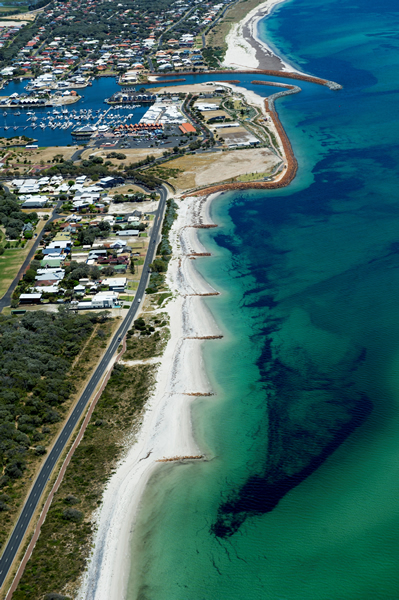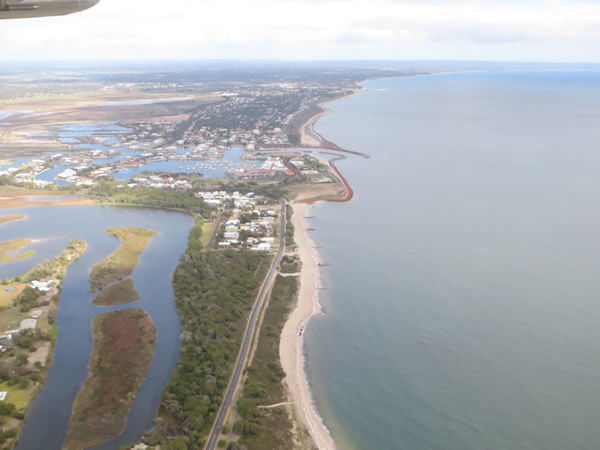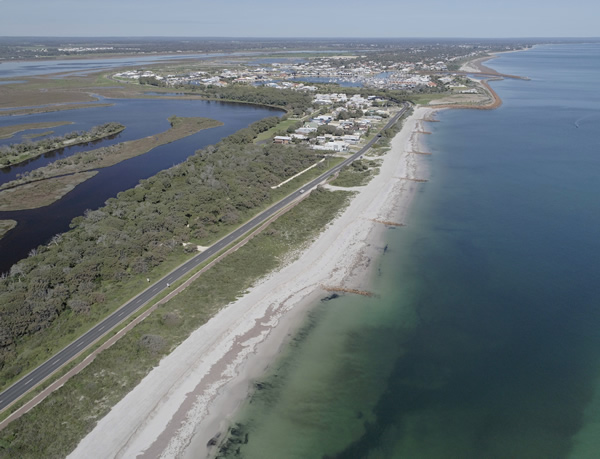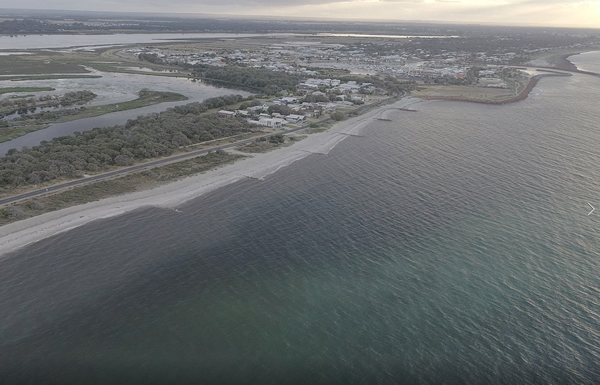DTMI has an ongoing responsibility for the performance of the reconfigured coastal structures and provides coastal monitoring, management and maintenance of the Port Geographe Coastal Management Area, which includes the:
- beach area west of Port Geographe (Western Beach);
- entrance channel; and
- Wonnerup Beach.
In 2020, a Technical Working Group provided a report with recommendations to reduce seagrass accumulation and erosion within the Port Geographe Coastal Management Area.
Following community consultation, the recommendations were incorporated into a management plan that includes ongoing:
- Hydrographic and land surveys
- Site inspections
- Photographic monitoring.
The plan also outlines responses to unwanted sand and wrack movement or accumulation, including:
- Dredging underwater accumulations of material
- Bypassing accumulated material
- Wrack pushing
- Sand importation (for example from local sand pits/quarries).
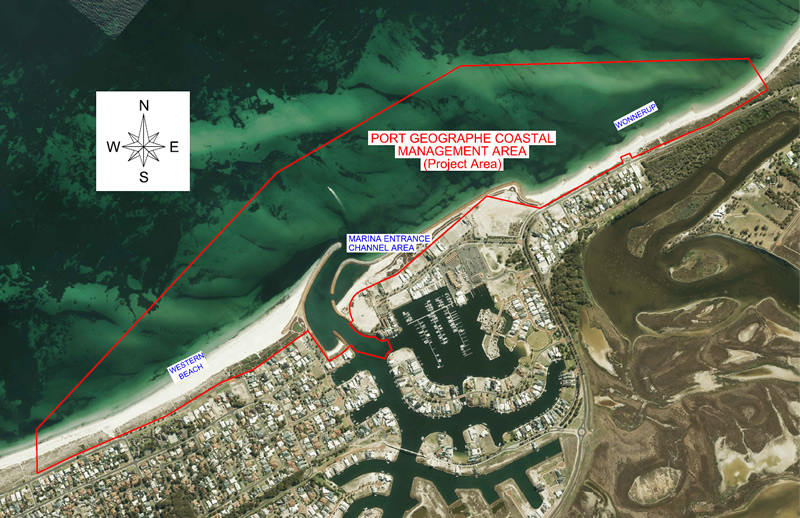
Project background
In 2015, DTMI reconfigured the coastal structures at Port Geographe to reduce erosion and seagrass accumulation.
In 2019, DTMI and City of Busselton representatives met with Port Geographe residents to discuss concerns about the performance of the coastal reconfiguration.
During this meeting, DTMI and the City agreed that a technical working group should be established.
In early 2020, DTMI established a Technical Working Group, which included an independent consultant and 4 technical experts with knowledge and experience at Port Geographe.
The TWG provided a technical review on the performance of the reconfigured coastline at Port Geographe that recommended:
- changes to current seagrass wrack dispersion and sand bypassing programs
- investigating options to address ongoing sea wrack accumulation and erosion issues.
DTMI released the draft recommendations to the public for feedback.
This feedback played an important role in shaping the final recommended actions.
The recommended actions were incorporated into a management plan to be implemented over the next 5 years.
Water quality
DTMI contracts specialists to coordinate water monitoring and sampling in various locations within the Port Geographe artificial waterways and adjacent Geographe Bay.
The artificial waterways are primarily used for boating and are not recommended for swimming, except for 4 beach areas, which are highlighted in green on the map below.
Swimming is not permitted in:
- the village centre pond
- the lower canal east area and the upper canal area
- south of the pedestrian bridge.
Areas where swimming is not permitted are highlighted in red on the map below.
DTMI does not recommend eating any seafood caught in the artificial waterways.
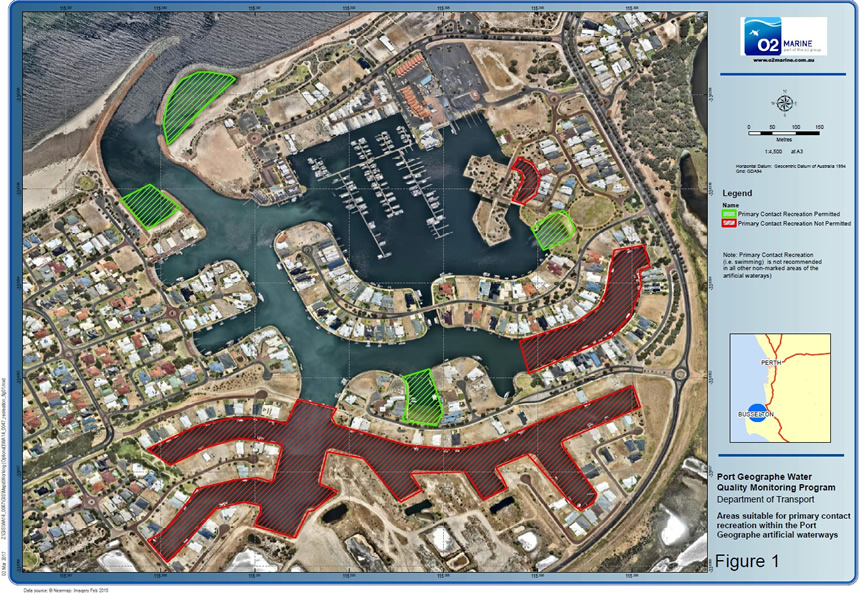
Image: Areas in the artificial waterways where swimming is permitted are marked in green. Areas where swimming is not permitted are marked in red. Swimming is not recommended in all other unmarked areas.
Environmental management and compliance reporting
In 2014, the Office of the Environmental Protection Authority issued the Ministerial Statement 990 to identify and guide DTMI’s management of the reconfigured coastal structures, entrance channel and adjacent beaches at Port Geographe.
The Port Geographe Coastal Structures Environmental Monitoring and Management Plan (EMMP) was developed to align with the environmental requirements in Statement 990.
DTMI is required to provide an annual Statement of Compliance.
Image gallery: Western Beach (monitoring and performance in 2017)
-
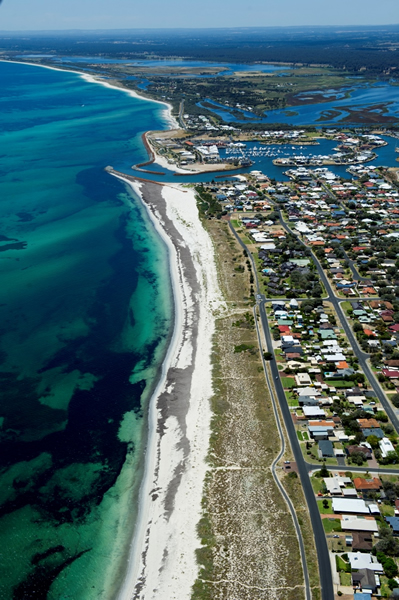
23 November 2016 -
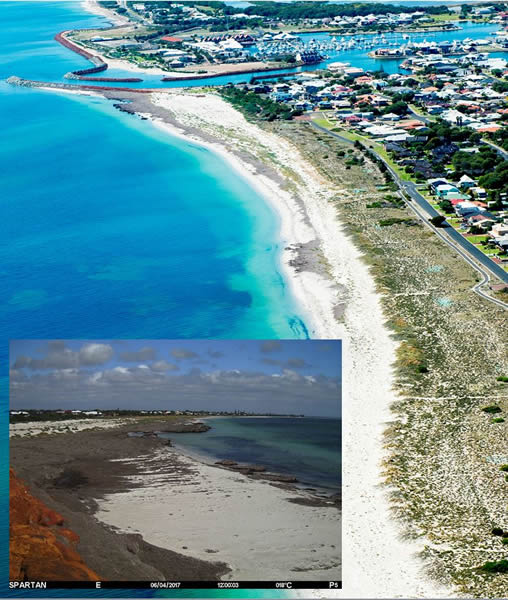
6 April 2017 -
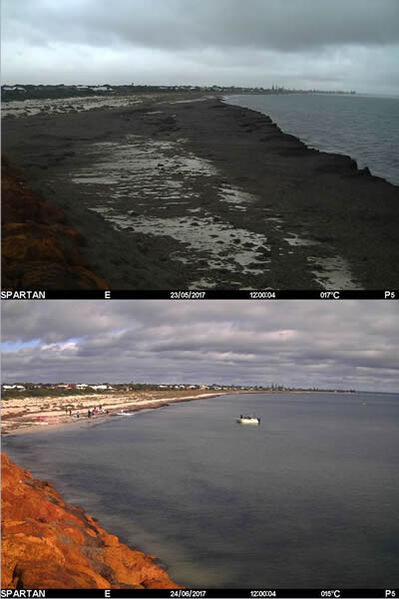
23 May 2017 and 24 June 2017 -
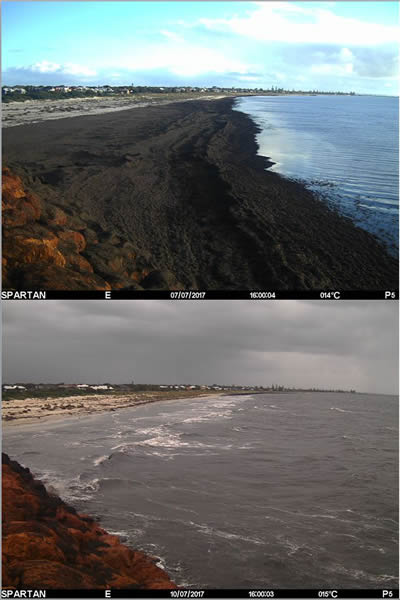
7 July 2017 and 10 July 2017 -
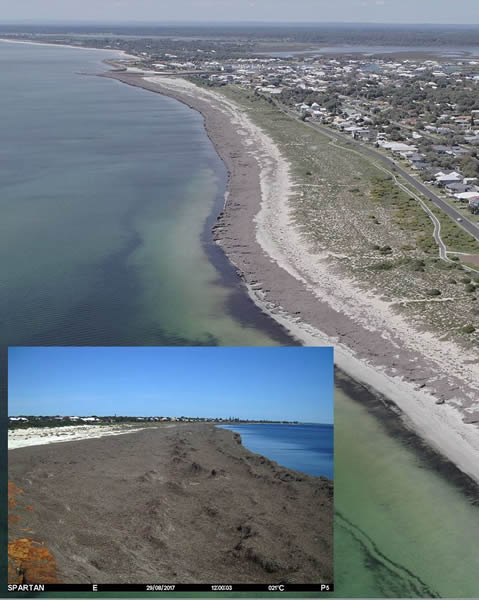
29 August 2017: Peak wrack volume of 2017 -
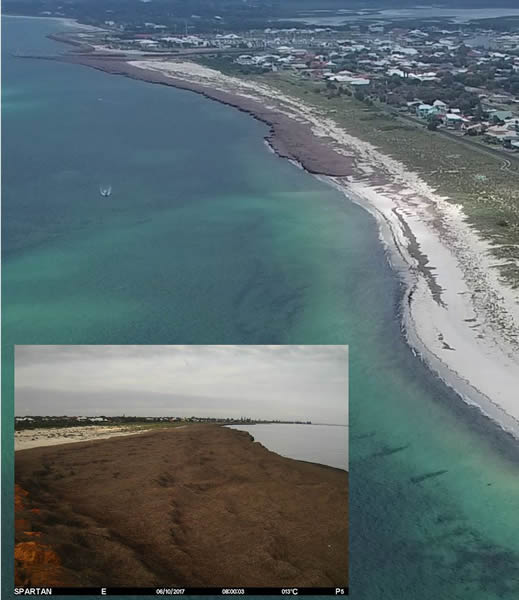
6 October 2017 -
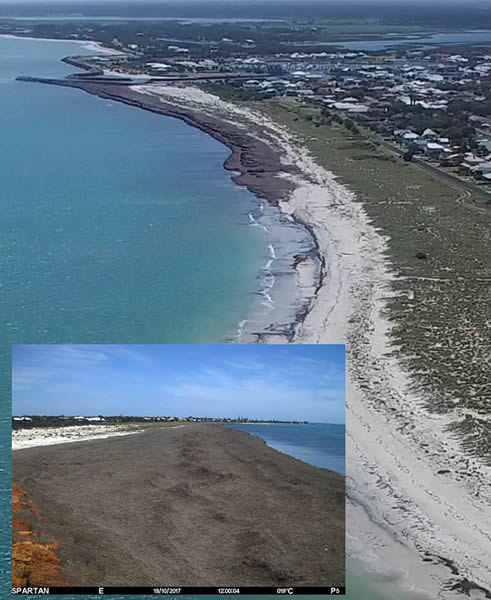
19 October 2017 -
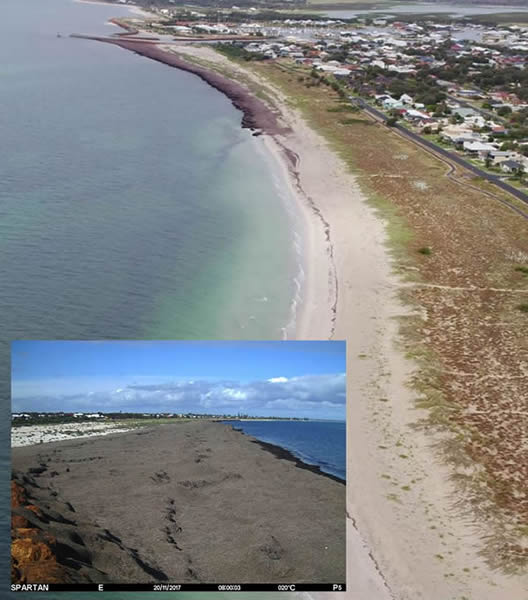
20 November 2017 -
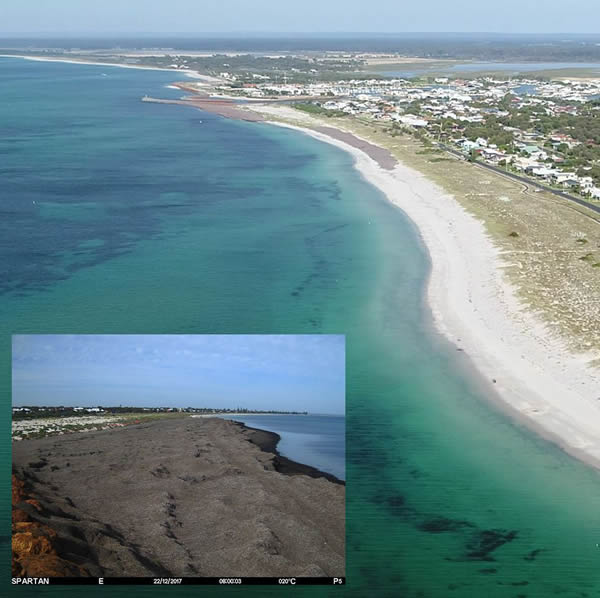
22 December 2017: Following mid-December storm and City of Busselton wrack works -
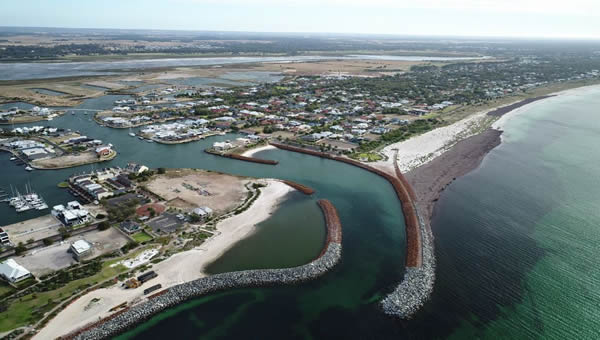
22 December 2017: Wrack volume approximately half peak volume of 29 August










